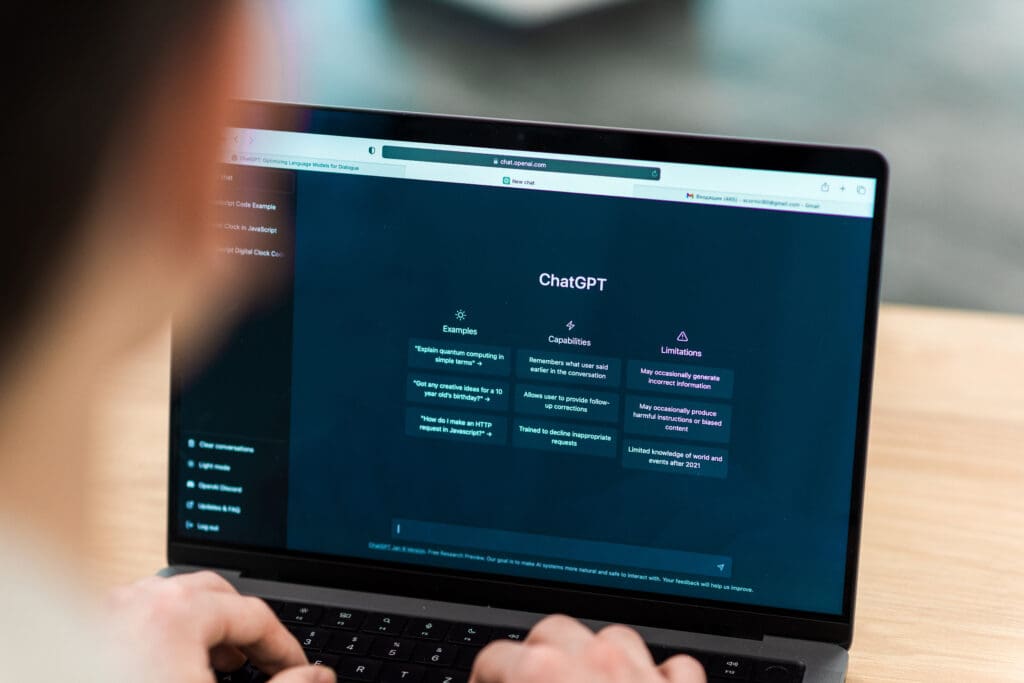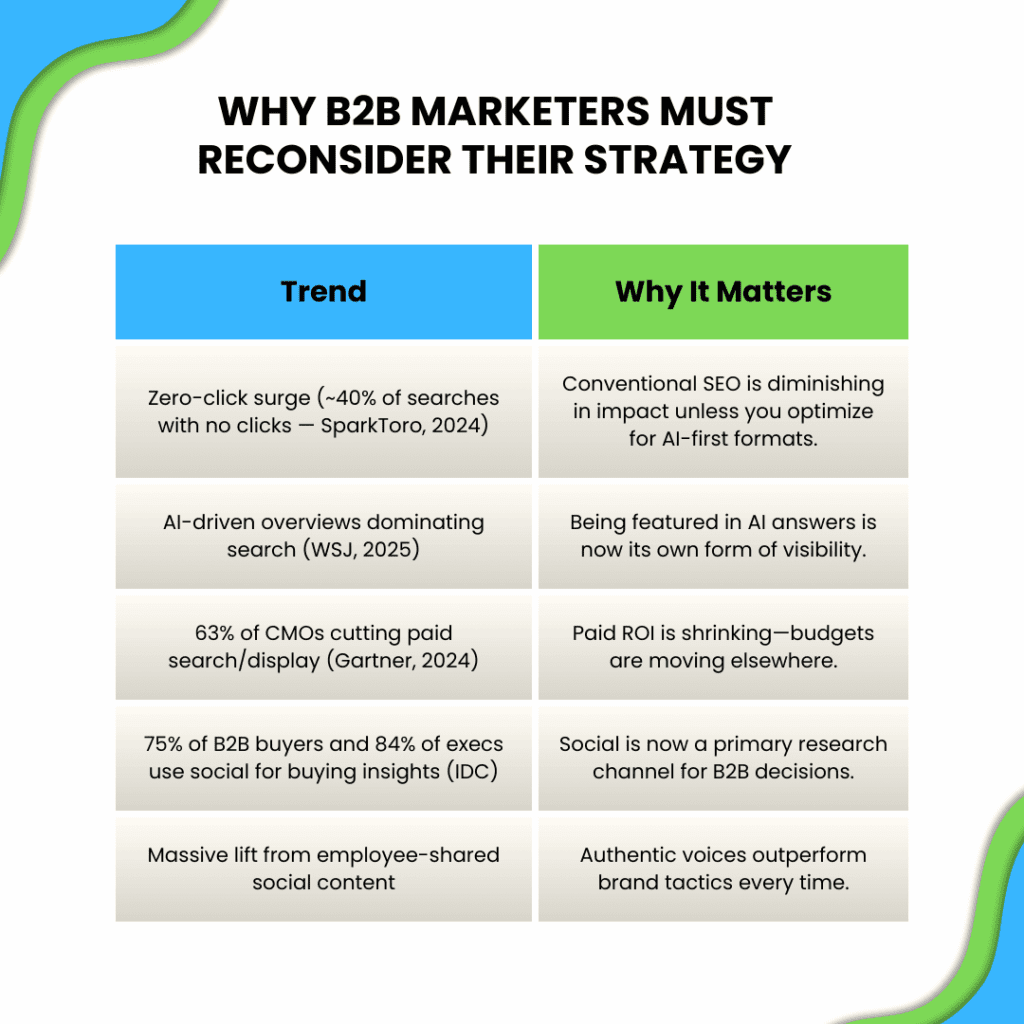
If you’ve noticed your paid search campaigns delivering fewer leads at a higher cost, you’re not alone. Across industries, CMOs and marketing leaders are confronting the same reality: paid search isn’t working the way it used to.
Google searches increasingly end before anyone clicks. AI-generated answers are taking center stage. And budgets for paid search and display are shrinking as executives look for more reliable ways to influence B2B buyers.
At the same time, organic social, particularly when powered by employees, has quietly become one of the most effective growth channels in the B2B toolkit. Buyers are relying on peers and trusted networks more than ever, and companies that adapt are reaping the benefits.
So what’s driving this shift, and why is “personal, organic social” becoming the new force to reckon with? Let’s break it down.
1. The Paid Search Click Crash: Zero-Click Searches Surge
The rise of AI and zero-click search is dramatically reshaping how prospects engage online. According to SparkToro (2024), nearly 40% of Google searches now end without a click to any site. Users increasingly find what they need through featured snippets, knowledge panels, or AI-generated summaries, meaning brands are often bypassed before they even get noticed. As Liz Reid, VP of Search at Google put it in a July 2025 blog, online searchers are looking for “more authentic voices.”

2. SEO Visibility Shrinks as AI Answers Bypass Websites
Traditional SEO-focused content is also losing visibility. The Wall Street Journal (May 2025) reported that Google’s AI-generated overviews now sit at the very top of search results, delivering direct answers without sending users to external websites. This shift means marketers can no longer rely on rankings alone. To adapt, many are exploring Generative Engine Optimization (GEO) and Answer Engine Optimization (AEO) so that their content is visible to AI systems as well as human readers.
3. CMOs Are Pulling Back on Paid Search & Display
The performance issues are showing up in budgets. According to Gartner (2024), 63% of CMOs have already cut budgets for paid search and display ads, citing lower ROI and the increasing difficulty of breaking through AI-driven results. Paid search, once the backbone of digital marketing, is being replaced by more cost-effective approaches.
4. The Social Shift: B2B Buyers Go Organic First
If not paid search, then where are buyers turning? Increasingly, to social media. Research from IDC shows that 75% of B2B buyers consult social media before reaching out to vendors, while 84% of executives say social media directly influences their purchasing decisions. LinkedIn, X (Twitter), and niche communities are now central to how decision-makers vet vendors, validate expertise, and discover solutions.
5. Organic Social Shared by Employees = Real Results
This is where the power of organic, human-centered social shines. Brands that empower employees to share content on their own networks see:
- 325% increase in qualified leads
- 60% lower cost per lead compared to traditional paid tactics
- 3.7× higher engagement rates on employee-shared posts than company-branded ones
It’s clear: buyers trust people more than logos, and employee advocacy has become one of the most cost-effective ways to scale influence.

Recommendations: Shift Budgets over to Social Selling Programs
Instead of continuing to pour dollars into underperforming paid search campaigns, organizations should reallocate budgets into social selling programs that equip their sales teams to become trusted voices online.
Here’s what that looks like in practice:
- Invest in Social Selling Infrastructure: Build programs that help sales teams confidently share company-approved insights, articles, and thought leadership on their personal profiles, primarily on LinkedIn, where B2B decision-making happens.
- Position Sales Teams as Thought Leaders: Encourage employees to move beyond product pitches by posting value-driven content. A marketing-approved content strategy ensures messaging is consistent, on-brand, and relevant while still allowing for personal authenticity.
- Scale Trust Through Personal Networks: Buyers trust people more than corporate ads. By enabling your salesforce to show up as credible experts in their industry, you tap into networks that are warmer, more engaged, and far more likely to convert.
- Reallocate Paid Ad Spend Wisely: Dollars previously earmarked for Google Ads can deliver stronger ROI when shifted toward training, enablement, and the tools required for a scalable employee advocacy program.
- Measure Impact Differently: Instead of focusing on clicks and impressions, track metrics like engagement on employee posts, inbound connection requests, content shares, and the quality of leads entering the pipeline.

The Bottom Line
Paid search is facing headwinds due to disappearing clicks, AI-first answers, and shrinking budgets that are reshaping the digital landscape. Meanwhile, organic, personal social, especially through employee advocacy and social selling programs, is rising as a more powerful and cost-effective way to influence B2B buyers in a meaningful and effective way. For marketing and sales leaders, the path forward is clear: adapt to AI-first search while doubling down on the authenticity and trust that only real people can deliver.
